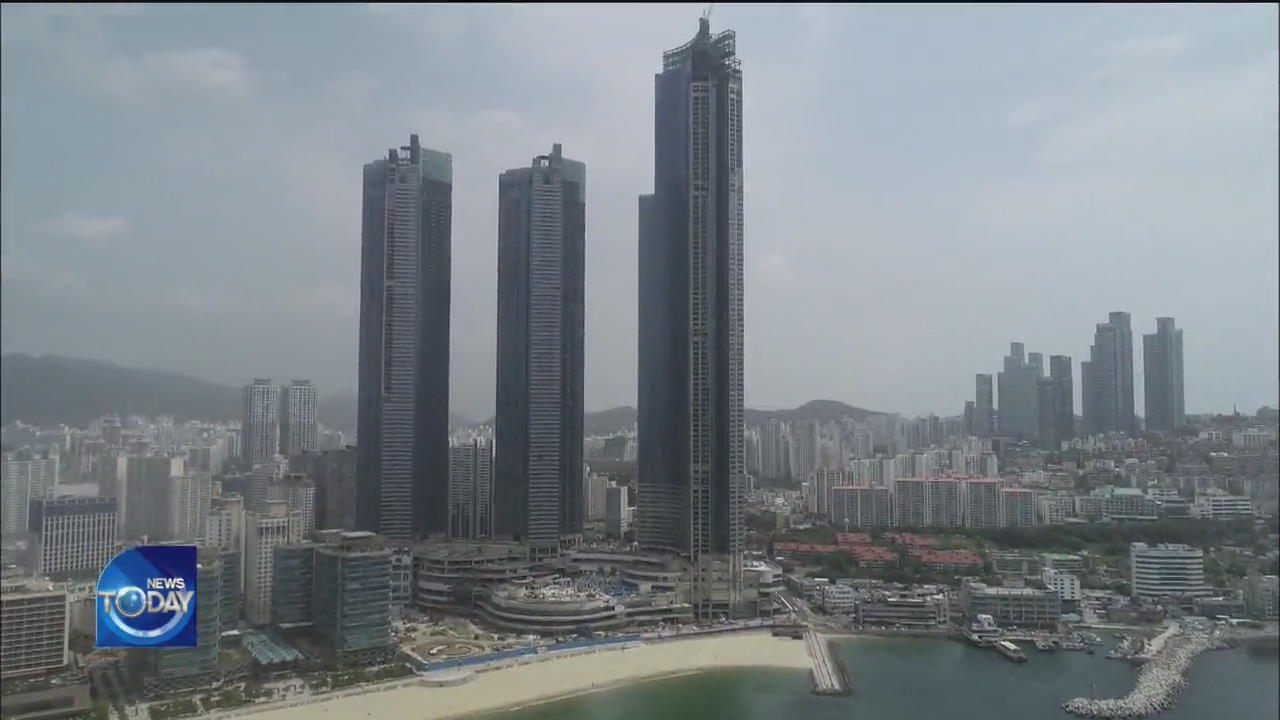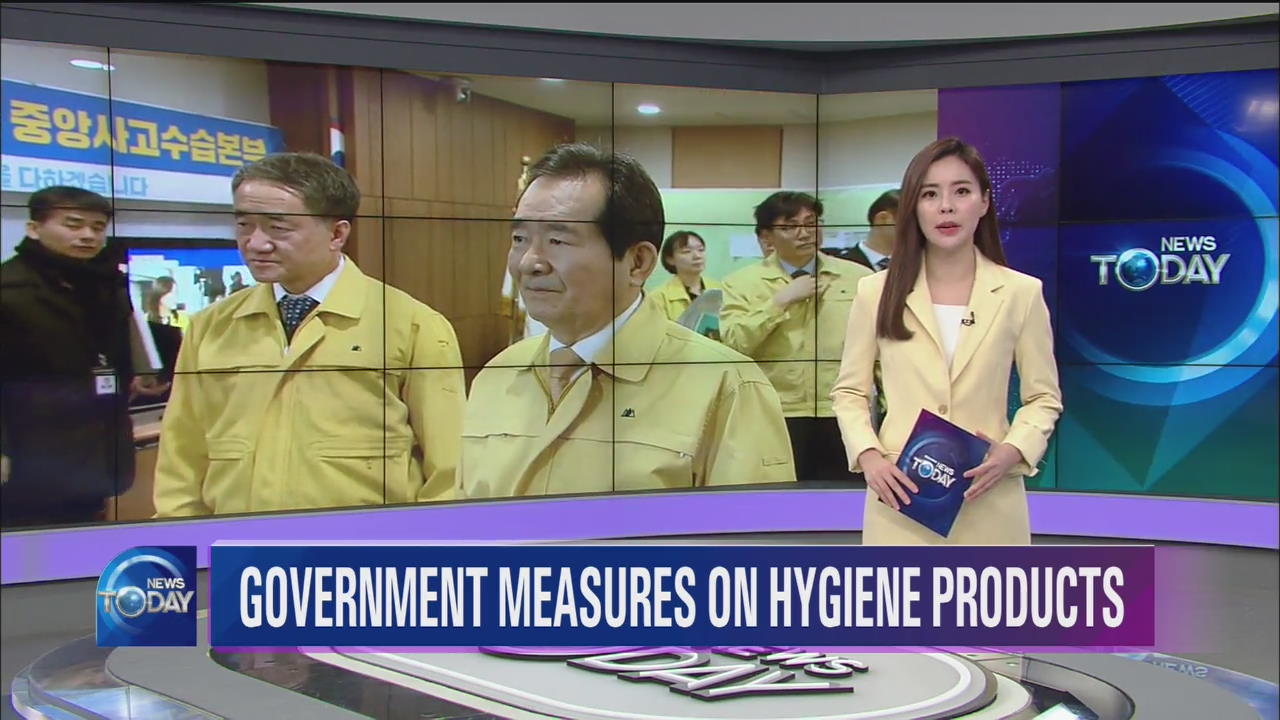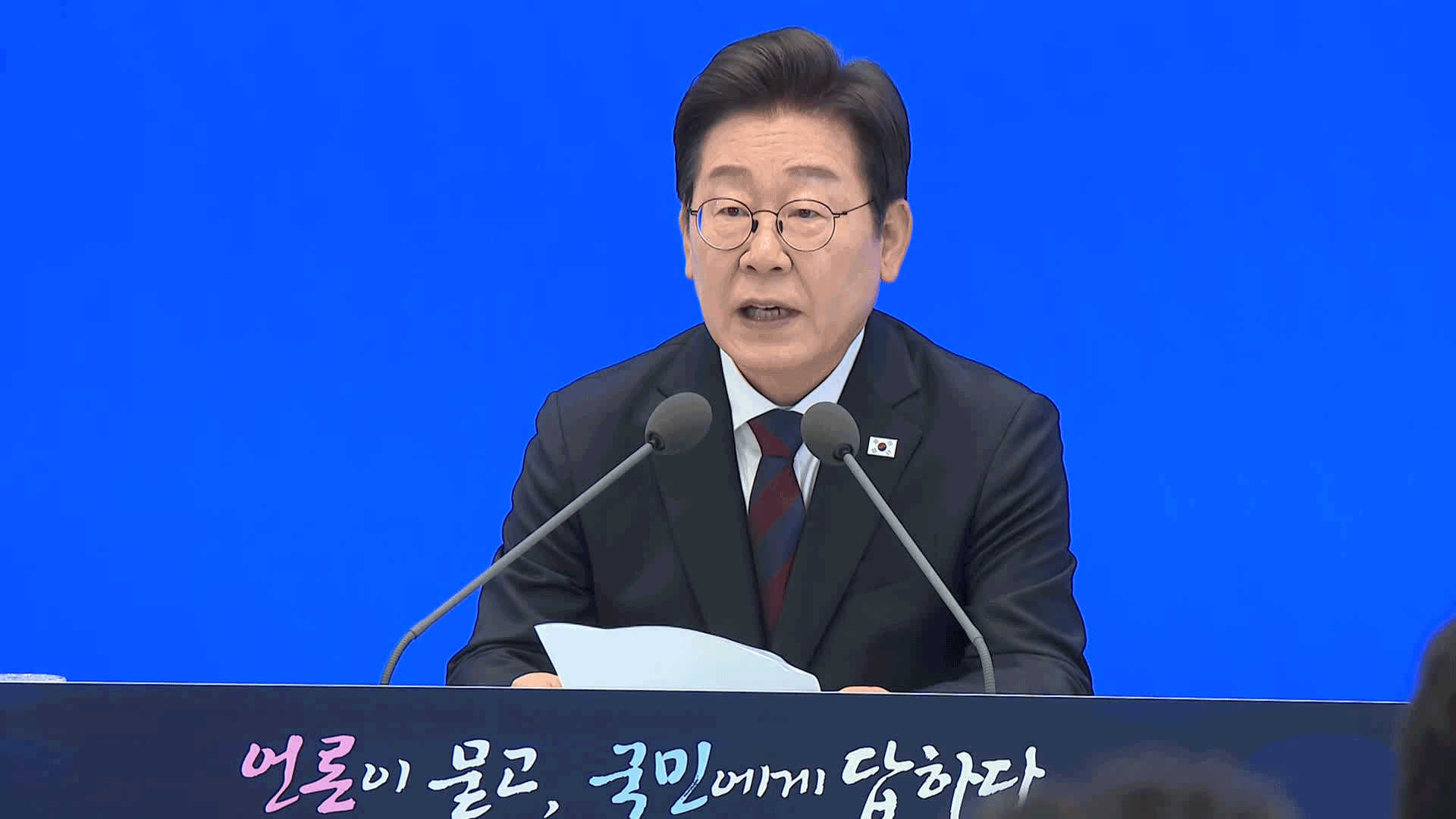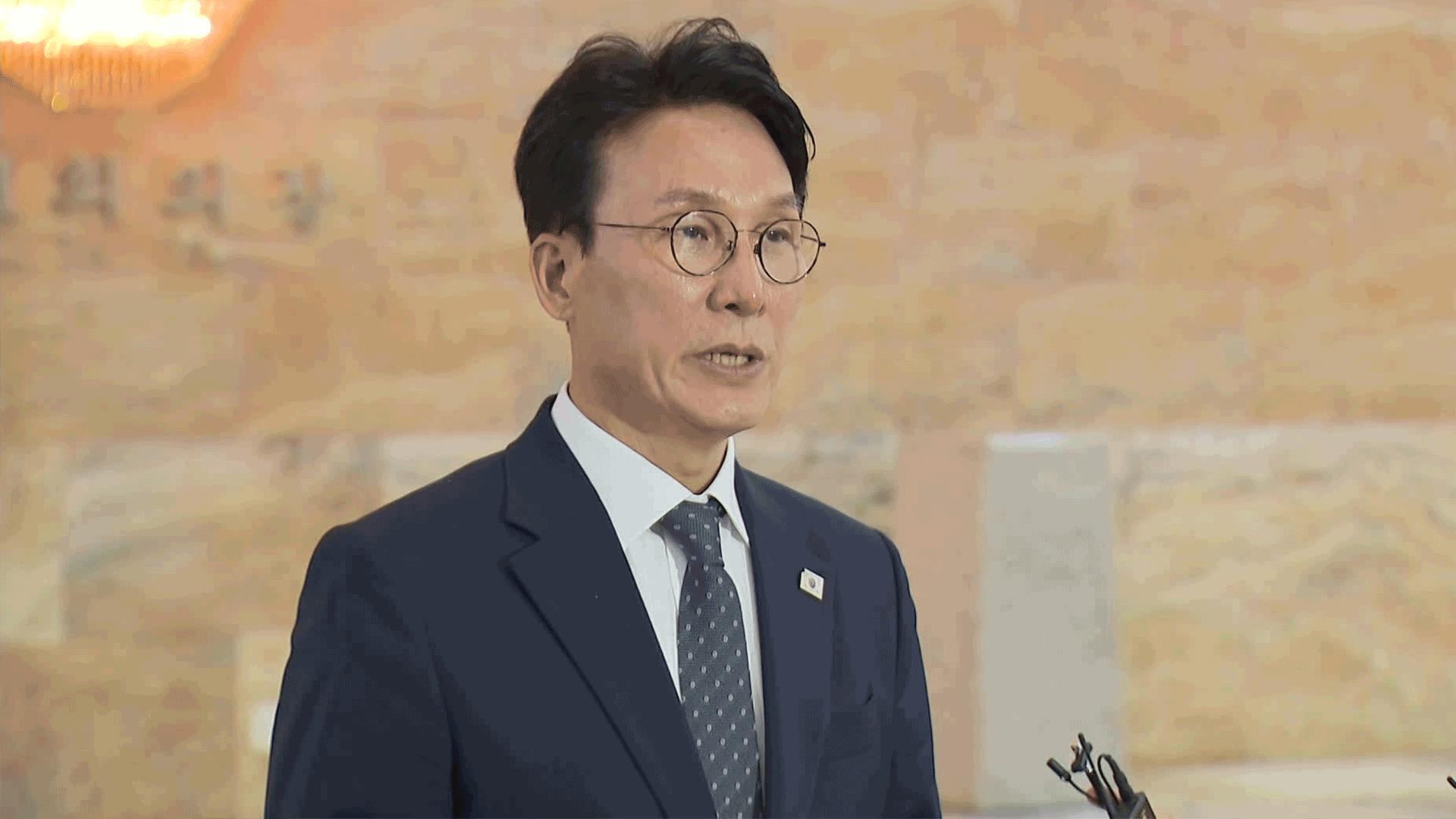WIND VELOCITY HIGHER AROUND TALL BUILDINGS
입력 2020.02.06 (15:07)
수정 2020.02.06 (16:45)
읽어주기 기능은 크롬기반의
브라우저에서만 사용하실 수 있습니다.
[Anchor Lead]
A research team confirmed the devastating power of the wind blowing between tall buildings. The Haeundae District Office in Busan conducted a test to check the velocity of the winds passing through skyscrapers. The team found that the wind velocity around the high-rise LCT, where windows shattered due to gusty winds, was more than twice as strong as other areas.
[Pkg]
Trees uprooted. Steel structures destroyed. The scenes near the skyscrapers in Haeundae after gusty winds reaching 24 meters per second swept through the area. The winds gained strength and velocity while passing through high-rise buildings.
[Soundbite] LEE MIN-GYEONG(RESIDENT) : "We had no problem even when a big typhoon like Maemi hit us. But that changed after LCT was built, we started seeing broken windows among other types of damage."
The destructive power of winds blowing between buildings has been confirmed in a simulation test. These are the findings from a study commissioned by the Haeundae District Office. When the wind is measured at 20 meters per second, the wind velocity at Mipo, Haeundae-gu District where the LCT buildings are located is projected at more than double the speed at 43 meters per second. A wind velocity of 20 meters per second warrants a strong wind alert. Under the same circumstances, the wind speed near Haeundae's Marine City increased 1.7 times to 35 meters per second.
[Soundbite] KIM DONG-HEON(RESEARCHER) : "Fluid or air tends to pick up speed when it flows from a large space to a narrow one, like the space between buildings."
There are limitations to this study as the results are from simulations. There could be variables in real situations. But it has been confirmed that winds grow stronger and faster as they pass through tall buildings. So the results should be helpful in finding solutions for the problem. Together with the Ministry of the Interior and Safety, Busan plans to conduct a joint study to devise countermeasures starting this April.
A research team confirmed the devastating power of the wind blowing between tall buildings. The Haeundae District Office in Busan conducted a test to check the velocity of the winds passing through skyscrapers. The team found that the wind velocity around the high-rise LCT, where windows shattered due to gusty winds, was more than twice as strong as other areas.
[Pkg]
Trees uprooted. Steel structures destroyed. The scenes near the skyscrapers in Haeundae after gusty winds reaching 24 meters per second swept through the area. The winds gained strength and velocity while passing through high-rise buildings.
[Soundbite] LEE MIN-GYEONG(RESIDENT) : "We had no problem even when a big typhoon like Maemi hit us. But that changed after LCT was built, we started seeing broken windows among other types of damage."
The destructive power of winds blowing between buildings has been confirmed in a simulation test. These are the findings from a study commissioned by the Haeundae District Office. When the wind is measured at 20 meters per second, the wind velocity at Mipo, Haeundae-gu District where the LCT buildings are located is projected at more than double the speed at 43 meters per second. A wind velocity of 20 meters per second warrants a strong wind alert. Under the same circumstances, the wind speed near Haeundae's Marine City increased 1.7 times to 35 meters per second.
[Soundbite] KIM DONG-HEON(RESEARCHER) : "Fluid or air tends to pick up speed when it flows from a large space to a narrow one, like the space between buildings."
There are limitations to this study as the results are from simulations. There could be variables in real situations. But it has been confirmed that winds grow stronger and faster as they pass through tall buildings. So the results should be helpful in finding solutions for the problem. Together with the Ministry of the Interior and Safety, Busan plans to conduct a joint study to devise countermeasures starting this April.
■ 제보하기
▷ 카카오톡 : 'KBS제보' 검색, 채널 추가
▷ 전화 : 02-781-1234, 4444
▷ 이메일 : kbs1234@kbs.co.kr
▷ 유튜브, 네이버, 카카오에서도 KBS뉴스를 구독해주세요!
- WIND VELOCITY HIGHER AROUND TALL BUILDINGS
-
- 입력 2020-02-06 14:58:43
- 수정2020-02-06 16:45:30

[Anchor Lead]
A research team confirmed the devastating power of the wind blowing between tall buildings. The Haeundae District Office in Busan conducted a test to check the velocity of the winds passing through skyscrapers. The team found that the wind velocity around the high-rise LCT, where windows shattered due to gusty winds, was more than twice as strong as other areas.
[Pkg]
Trees uprooted. Steel structures destroyed. The scenes near the skyscrapers in Haeundae after gusty winds reaching 24 meters per second swept through the area. The winds gained strength and velocity while passing through high-rise buildings.
[Soundbite] LEE MIN-GYEONG(RESIDENT) : "We had no problem even when a big typhoon like Maemi hit us. But that changed after LCT was built, we started seeing broken windows among other types of damage."
The destructive power of winds blowing between buildings has been confirmed in a simulation test. These are the findings from a study commissioned by the Haeundae District Office. When the wind is measured at 20 meters per second, the wind velocity at Mipo, Haeundae-gu District where the LCT buildings are located is projected at more than double the speed at 43 meters per second. A wind velocity of 20 meters per second warrants a strong wind alert. Under the same circumstances, the wind speed near Haeundae's Marine City increased 1.7 times to 35 meters per second.
[Soundbite] KIM DONG-HEON(RESEARCHER) : "Fluid or air tends to pick up speed when it flows from a large space to a narrow one, like the space between buildings."
There are limitations to this study as the results are from simulations. There could be variables in real situations. But it has been confirmed that winds grow stronger and faster as they pass through tall buildings. So the results should be helpful in finding solutions for the problem. Together with the Ministry of the Interior and Safety, Busan plans to conduct a joint study to devise countermeasures starting this April.
A research team confirmed the devastating power of the wind blowing between tall buildings. The Haeundae District Office in Busan conducted a test to check the velocity of the winds passing through skyscrapers. The team found that the wind velocity around the high-rise LCT, where windows shattered due to gusty winds, was more than twice as strong as other areas.
[Pkg]
Trees uprooted. Steel structures destroyed. The scenes near the skyscrapers in Haeundae after gusty winds reaching 24 meters per second swept through the area. The winds gained strength and velocity while passing through high-rise buildings.
[Soundbite] LEE MIN-GYEONG(RESIDENT) : "We had no problem even when a big typhoon like Maemi hit us. But that changed after LCT was built, we started seeing broken windows among other types of damage."
The destructive power of winds blowing between buildings has been confirmed in a simulation test. These are the findings from a study commissioned by the Haeundae District Office. When the wind is measured at 20 meters per second, the wind velocity at Mipo, Haeundae-gu District where the LCT buildings are located is projected at more than double the speed at 43 meters per second. A wind velocity of 20 meters per second warrants a strong wind alert. Under the same circumstances, the wind speed near Haeundae's Marine City increased 1.7 times to 35 meters per second.
[Soundbite] KIM DONG-HEON(RESEARCHER) : "Fluid or air tends to pick up speed when it flows from a large space to a narrow one, like the space between buildings."
There are limitations to this study as the results are from simulations. There could be variables in real situations. But it has been confirmed that winds grow stronger and faster as they pass through tall buildings. So the results should be helpful in finding solutions for the problem. Together with the Ministry of the Interior and Safety, Busan plans to conduct a joint study to devise countermeasures starting this April.
이 기사가 좋으셨다면
-
좋아요
0
-
응원해요
0
-
후속 원해요
0













![[단독] 도이치 주포 “김건희, 내 덕에 떼돈 벌어…22억 원 주문”](/data/news/2025/07/03/20250703_KpuU43.png)
![[단독] “쪽지 얼핏 봤다, 안 받았다”더니…CCTV에선 문건 챙긴 이상민](/data/news/2025/07/03/20250703_Lv3LjI.png)


이 기사에 대한 의견을 남겨주세요.